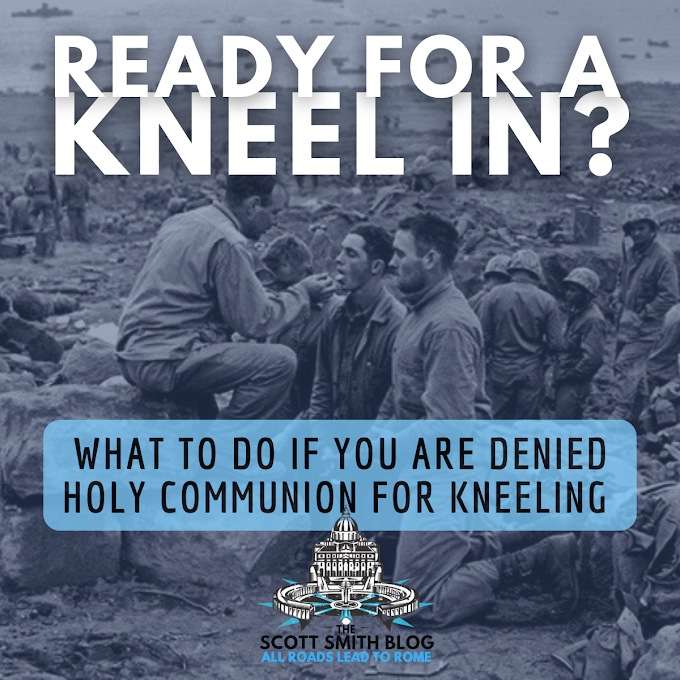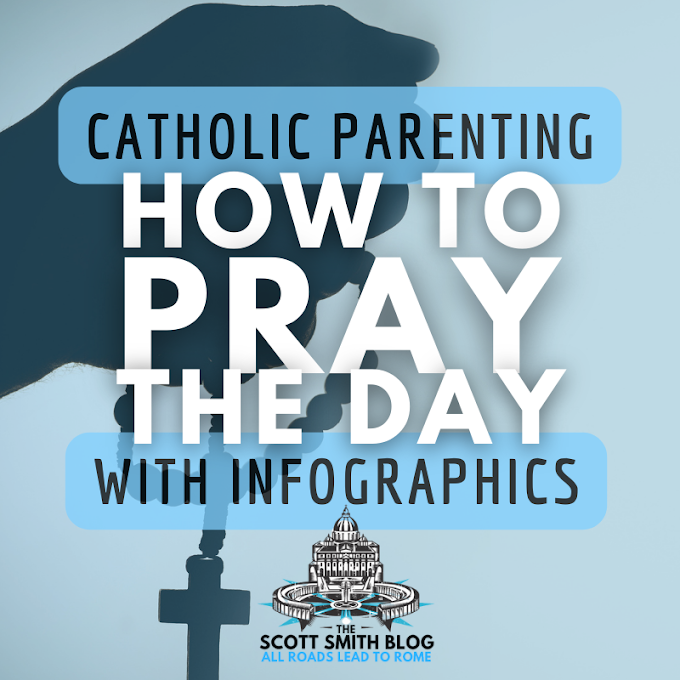Elijah's Assumption into Heaven is confirmed in the New Testament at the Transfiguration, where we see Moses and Elijah with Christ in Heaven. The story of Elijah's assumption into Heaven riding on a fiery chariot (2 Kings 2) is well-known, but what about the Assumption of Moses?
NOTE: This is part two of a four-part series, Proving Mary's Assumption.
In Part 1 of this series, we saw the descriptions of Enoch and Elijah's assumptions in both the New and the Old Testaments.
Part 3 and Part 4 describe the Assumption of the Ark and then how all of this leads to the Assumption of Mary, herself.
This is all part of a book and course on the Blessed Mother that was released at the 100th Anniversary of the appearance of Our Lady of Fatima on October 13th. Learn how to give a robust defense of the Blessed Mother with What You NEED to Know About Mary (But Were Never Taught). A free copy of the book is included with the course!
Back to the Assumption of ... who again?
So ... wait! How could there be an Assumption of Moses, if Scripture tells us that he was buried? Moses' burial is described at Deuteronomy 34:5-6:
So Moses the servant of the Lord died there in the land of Moab, according to the word of the Lord, and he buried him in the valley in the land of Moab opposite Beth-pe′or; but no man knows the place of his burial to this day.
Wait, he was buried, but "no man knows" where? That's a curious statement. The same Israelites who kept the bones of the Patriarch Joseph for hundreds of years and then carried them for another 40 years in the desert (see Exodus 13:19) -- they just lost Moses' bones? Not likely.
How can Moses be buried AND in Heaven? The Epistle of St. Jude
 |
| The Devil Rebuked (The Burial of Moses) by William Blake |
There's a funny little passage in the New Testament in the Epistle of St. Jude:
But when the archangel Michael, contending with the devil, disputed about the body of Moses, he did not presume to pronounce a reviling judgment upon him, but said, “The Lord rebuke you.” (Jude 1:9)
What's going on here? Why are St. Michael and the devil disputing over the body of Moses? What's this referring to?
First off, the devil has a claim on Moses' body because is a murderer. This occurs at Exodus 2:11-15, where Moses kills an Egyptian who was beating a Hebrew slave. Remember this scene?
The Archangel Michael, therefore, is disputing with the devil to reclaim Moses' body for Heaven. This serves, therefore, as one account of how Moses entered into Heaven.
But that's only half of it. St. Jude is citing this episode from another source. What other source? The name of the source just happens to be ...
The Assumption of Moses, also called The Testament of Moses or The Ascension of Moses (Analepsis Moseos)
[Interestingly, St. Jude cites elsewhere from another Apocryphal work from another assumptee: Enoch]
The Assumption of Moses is a well-known ancient text. It's not part of the Jewish or Christian canons of Scripture. Instead, it's part of the Jewish Apocrypha. It includes prophesies of the events of the First Century AD. It was likely written around the First Century AD, as well.
A complete copy of the manuscript hasn't survived to the present day, though its existence is testified to by many ancient writers including Origen. Our most complete copy of the work was found in the 1800s inside a 6th century manuscript by Antonio Ceriani in the Biblioteca Ambrosiana in Milan.
So, what does The Assumption of Moses tell us about the assumption of Moses?
As I wrote above, several ancient authors wrote about the contents of The Assumption of Moses. They describe Joshua seeing two Moseses when he was taken up: one with the angels and one honoured with burial in the valley.(1)(2)(3)
Conclusion
On the one hand, it's clear that Moses is in Heaven from the account of the Transfiguration. On the other hand, it's clear that Moses' assumption into Heaven is an ancient tradition, known to both Jews and Christians.
Nevertheless, we are left with a riddle. How did this all happen and what does it mean? The Mystery of the "Two Moseses" will likely remain a mystery -- as well as the ugliest pluralization ever -- until all things are unveiled.
BUT ... It all points to something very interesting about Mary's Assumption.
FIND OUT WHAT IN PART THREE: The Assumption of Moses' Ark.
Proving the Assumption of Mary Footnotes:
(1) This opinion is shared by Origen, who asserts that in a certain uncanonical book mention is made of two Moses' being seen, one alive in the spirit, the other dead in the body. In Libr. Jesu Nave, Hom, ii. 1: "Denique et in libello quodam, licet in canone non habeatur, mysterii tamen hujus figura describitur. Refertur enim quia duo Moses videbantur, unus vivus in spiritu, alias mortuus in corpore."
(2) Evodius, a contemporary of St. Augustine, has the same gloss, derived from the same source: "When he ascended the mountain to die, the power of his body brought it to pass, that there should be one body to commit to earth, and another to be the companion of his attendant angel." Augustin. Ep. 158 (ii. p. 426, Ben.): "Quamquam et in apocryphis et in secretis ipsius Moysi, quæ, scriptura caret auctoritate, tunc cum ascenderet in montem ut moreretur, vi corporis efficitur ut aliud esset quod terræ mandaretur, aliud quod angelo comitanti sociaretur."
(3) Another legend, traced to the same origin, recounts how at Moses' death a bright cloud so dazzled the eyes of the bystanders that they saw neither when he died nor where he was buried. Caten. in Pent. ap. Fabric. Cod. Pseud. Ephesians 5.T. ii. (p. 121.)
For more, check out this link.













18 Comments
created by God's paternal thoughts before Adam. I could go on in the same vein St Gertrude was told to pray when she enquired how should pry for those you asked me tp pray for? Jesus said, "Pray that all that was in my mind when I created them comes to pass".